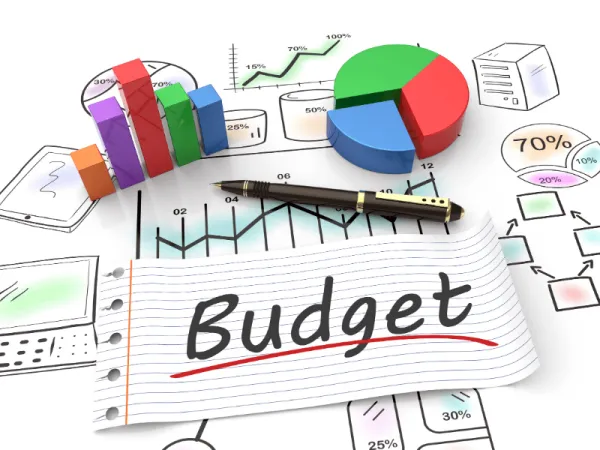
Picture of a certificate of deposit.
Maximize savings: should I choose long or short-term CD?
Intro: CDs to maximize savings
CDs, or certificates of deposit, can be a useful tool to maximize savings for certain individuals, depending on their financial goals and risk tolerance.
Unlike investments in stocks or bonds, which can fluctuate in value, CDs offer a predictable return. You know exactly how much you'll earn at the end of the term. These days, investors can get 4% and even 5% for short term CDs such as 6 months or 1 year.
Also, CDs come in various terms, ranging from a few months to several years. You can choose a term that aligns with your financial goals and when you'll need the money.
Lastly, CDs are considered relatively low-risk investments because they are typically backed by the FDIC in the United States, up to $250,000.
Long terms CDs: Pros & Cons
Given the context that short-term CD rates are currently higher, it's important to evaluate the advantages and disadvantages of long-term CDs. Generally, CDs with terms of two years or longer are considered long term.
Benefits | Drawbacks |
Stable Returns | Lower yield |
Long-Term Financial Planning | Limited Liquidity |
Missing Alternatives |
Benefits
· Stable Returns: Long-term CDs provide a guaranteed interest rate for the duration of the term, shielding you from fluctuations in interest rates during that period. This stability can be attractive for individuals seeking predictable returns on their investment.
· Long-Term Financial Planning: If you have long-term financial goals or obligations, such as funding a child's education or saving for retirement, long-term CDs can serve as a part of your overall financial strategy. They provide a reliable option to grow your savings over time.
Drawbacks
· Lower yield: currently, short term CDs offer higher yield than long term CDs. This is againast the nature of how CDs works, but the current financial situation and the uncertainty about the next steps of the FED cause short term CD rates to be higher than long term CD rates.
· Limited Liquidity: One significant drawback of long-term CDs is the lack of liquidity. When you invest in a long-term CD, you commit to keeping your funds locked for the entire term. You won’t be able to withdraw them for emergency, home improvement or any other reason withour a penalty that forfeiting some or all of the accrued interest.
· Missing Alternatives: By investing in a long-term CD, you may miss out on potential opportunities that arise during the term. If interest rates rise significantly or other investment options with better returns become available, you won't be able to take advantage of them without incurring penalties.
Short terms CDs: Pros & Cons
Short-term CDs are deposit accounts offered by banks and credit unions with relatively brief maturity periods of 3 months to 1 year. They are designed for individuals or businesses looking to invest their money for a shorter duration while earning a fixed interest rate.
Benefits | Drawbacks |
Higher yield | Interest rate changes |
Flexibility and Liquidity | Frequent Rollovers |
Benefits:
· Higher yield: currently, short term CDs in the US offer higher yield than long term CDs. This is against the nature of how CDs works, but the current financial situation and the uncertainty about the next steps of the FED cause short term CD rates to be higher than long term CD rates. They also provide higher interest rates compared to other short-term savings options such as regular savings accounts or money market accounts.
· Flexibility and Liquidity: Short-term CDs provide more flexibility and liquidity compared to long-term CDs. Since the maturity period is shorter, you can access your funds sooner without incurring significant penalties. This makes them suitable for individuals who may need their money in the near future or want to take advantage of better investment opportunities that may arise.
Drawbacks:
· Interest rate changes: most analysts expect the higher interest rates won’t keep forever, and the fed will have to cut the rates in 2024. In such a a case, those who put their money in long term CDs will be able to keep enjoying the high rates, while those who invested in short term CDs won’t be able to do it.
· Frequent Rollovers: Since short-term CDs have shorter durations, you may need to roll over your investment more frequently which can involve additional administrative tasks. Rollovers may also introduce the risk of forgetting to reinvest your funds promptly.
Long vs Short Term CDs: How To Choose Between Them?
Deciding between short-term and long-term CDs requires careful consideration of your financial goals, risk tolerance, and current market conditions. Here are some steps to help you make an informed decision:
· Determine Your Financial Goals: Start by clearly defining your financial objectives. Are you saving for a specific short-term goal, such as a down payment on a house, or do you have long-term goals like retirement planning? Understanding your goals will help guide your investment decisions.
· Choose a term for your needs: Consider the length of time you are willing to commit your funds. If you anticipate needing the money in the near future, a short-term CD might be more suitable. For longer-term goals, such as retirement savings, a long-term CD could align better with your timeframe.
· Assess Interest Rate Trends: Research the current interest rate environment and evaluate the potential for rate changes. If short-term CD rates are significantly higher than long-term CD rates, it may be more enticing to opt for short-term CDs. However, if long-term CD rates are attractive and you want to lock in a guaranteed rate, a long-term CD might be a better choice.
· Consider Risk Tolerance: Assess your comfort level with risk. Short-term CDs offer more liquidity and flexibility, making them lower-risk investments. On the other hand, long-term CDs provide stability and potentially higher returns but involve a longer commitment and may be subject to inflation risk.
· Compare Rates and Terms: Analyze the interest rates, terms, and conditions offered by different financial institutions for both short-term and long-term CDs. Look for competitive rates, favorable terms, and any additional features or benefits that align with your needs.
· Evaluate Penalties and Fees: Review the penalties and fees associated with early withdrawal or early termination of the CDs. Understand the financial implications if you need to access your funds before the maturity date.
· Seek Professional Advice: if you’re still not sure, you can Consider consulting with a financial advisor who can provide personalized guidance based on your unique financial situation. They can help you evaluate the pros and cons of short-term and long-term CDs and align your investment strategy with your goals.
Remember, there is no one-size-fits-all answer when choosing between short-term and long-term CDs. Your decision should be based on a careful assessment of your financial circumstances, investment objectives, and risk tolerance.


